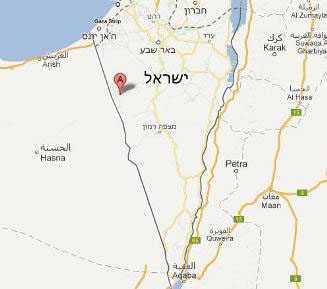 Watchtowers, tall fences, barbed wire, rows of block mass sleeping accommodation—these are the reality of the Israeli concentration camps set up around Ketsiot, near the Egyptian border.
Watchtowers, tall fences, barbed wire, rows of block mass sleeping accommodation—these are the reality of the Israeli concentration camps set up around Ketsiot, near the Egyptian border.
The Ketsiot area is one of the most remote corners in Israel, a desert region south of Gaza on the Israeli-Egyptian border.
The four camps in the area hold more than 16,000 inmates, which makes them the single largest detention facility in the western world, and possibly in the whole world.
The Israeli concentration camps are used to detain the majority of the 60,000 African asylum seekers in Israel, most of them from Eritrea and Sudan.
Despite having signed and largely promoted the 1951 Refugee Convention—which obliges nations to review and grant residency to asylum applicants while their reviews are underway, the Zionist state does not review the asylum claims of Eritreans and Sudanese, and doesn’t grant them residency rights.
The Israeli Parliament has passed a “Prevention of Infiltration” law, which sanctions the detention of everyone who enters Israeli illegally, including minors, for a minimum of three years.
The concentration camps are the direct result of the law, which also states that a person from an “enemy state” can be imprisoned indefinitely.
The four camps are called Ketsiot, Saharonim, Sadot and Nachal Raviv. The latter has been built on Israeli army land in order to bypass the local zoning committees and objections expressed by the regional council, which claimed that the conditions were not suitable for humans.
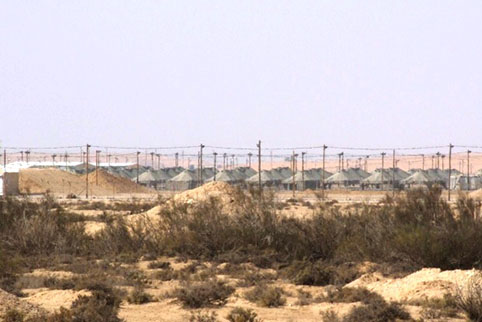
Two views of Nachal Raviv concentration camp.
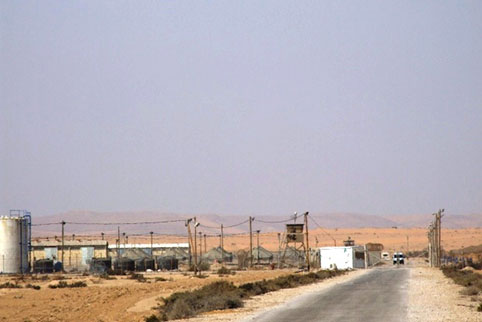
Below: The interior of the Sadot camp, which contain bunk beds and barred windows. The rooms have no air condition and temperatures are often above 100 degrees Farehenheit during the day.
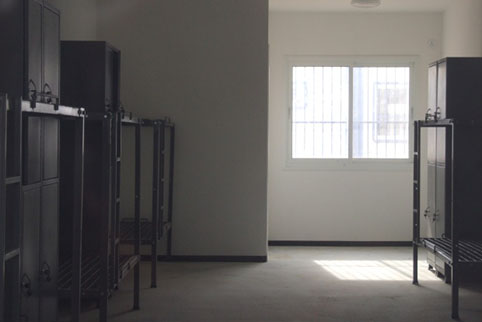
Below: Saharonim and Ketsiot camps, showing the array of guard towers.
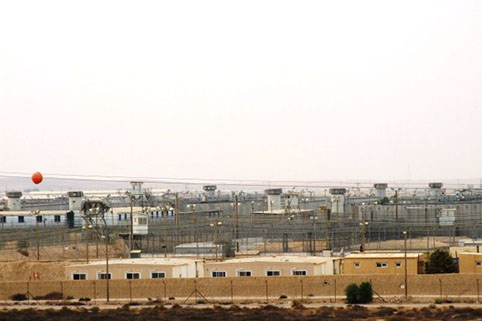
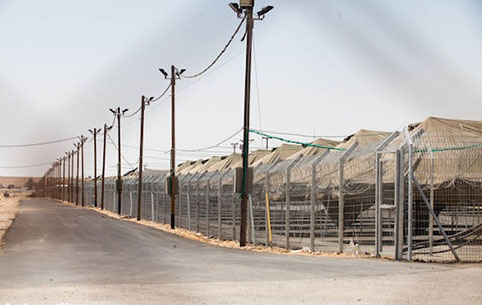
The new law allows the state to imprison all asylum seekers and everyone who crosses the border these days is sent to the camps.
The actual numbers entering Israel is currently very low because of the fence the Zionists have constructed, and also because Israeli Defence Force soldiers patrol both sides of the Egyptian border, and regularly detain and hand over asylum seekers to the Egyptian authorities to deal with.

The gate to Saharonim camp.




